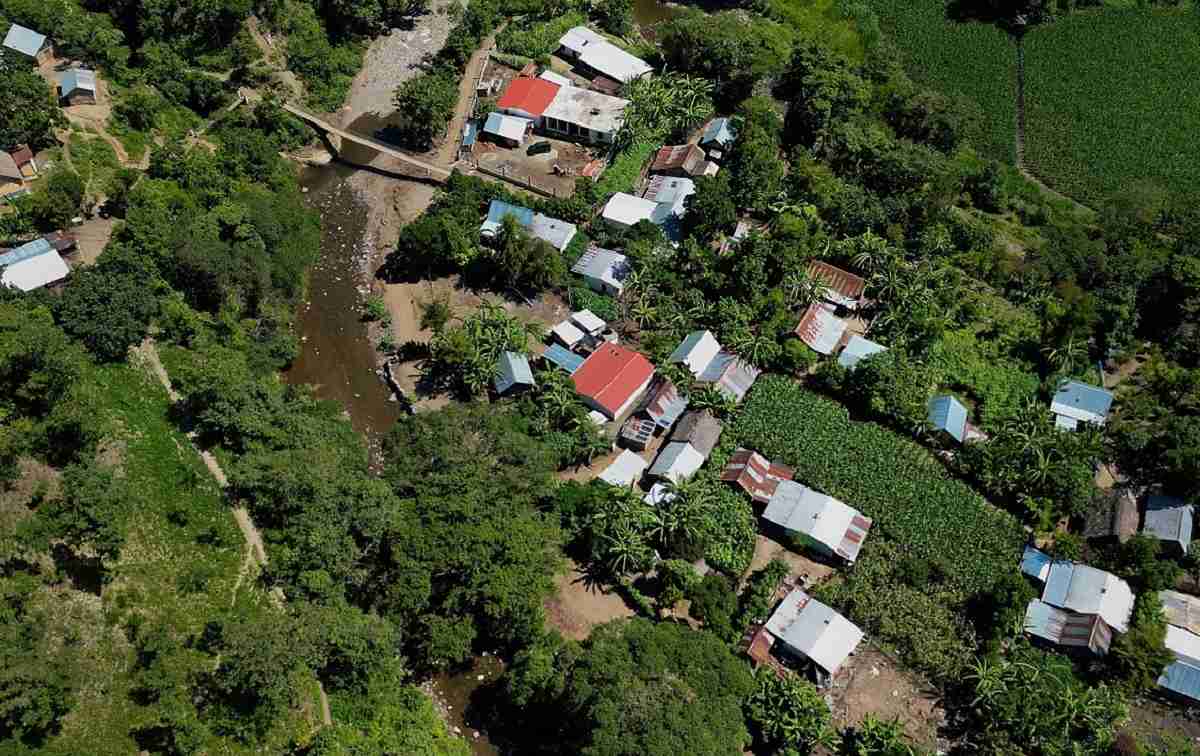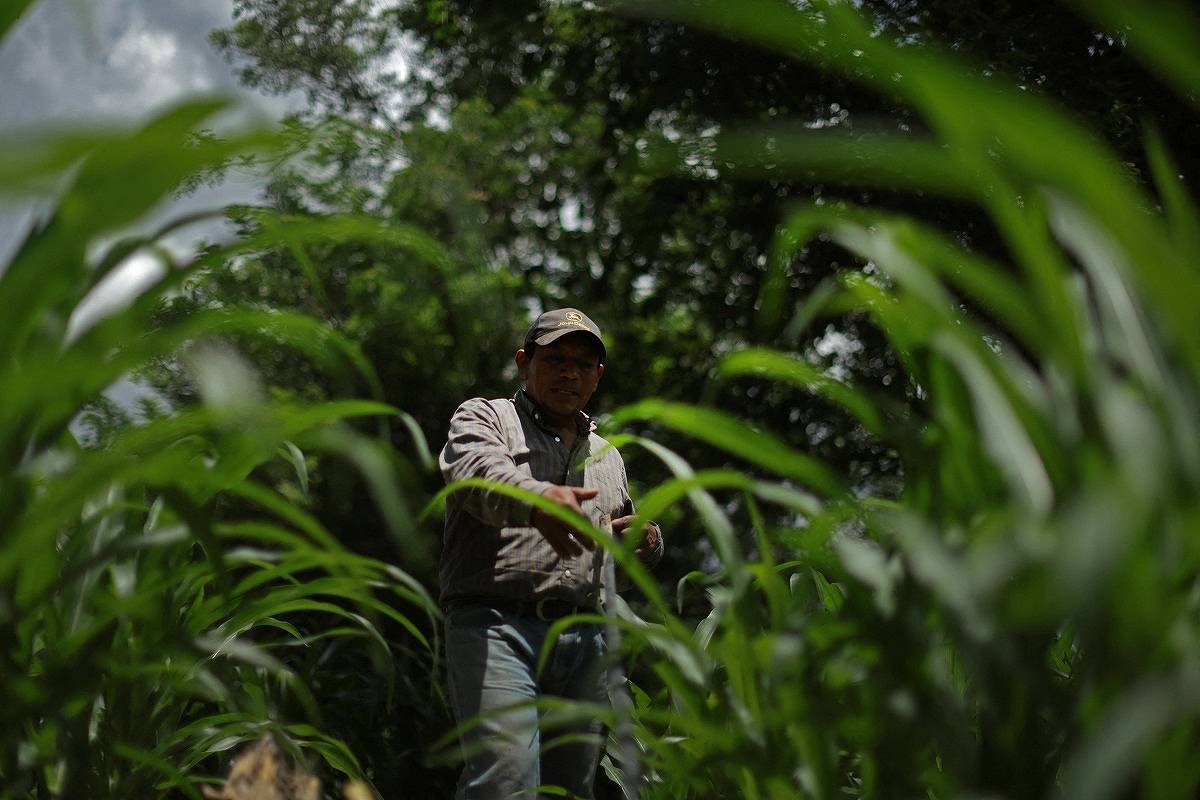
El Aguacate village in Baja Verapaz, Guatemala, is seen on Aug. 16
16:22 JST, October 28, 2023
EL AGUACATE, Guatemala (Reuters) — Maria Concepcion Rodriguez woke early and lowered herself to the ground from one of the hammocks her family of eight uses to sleep.
She washed her hands and started a fire, preparing to make breakfast from scarce supplies. Some leafy greens, perhaps some eggs.
There might be enough corn from a small patch of land the family rents to grow food only to feed themselves to make tortillas.
But it hasn’t been enough, especially lately. Usually the rainy season begins in May or June, but there wasn’t much this year, she said.

Maria Concepcion Rodriguez holds a bowl of beans and a tortilla during lunch at her house in El Aguacate village.
“There has been a lot of drought in recent years,” Maria, who speaks the Mayan language Achi, said through a translator one day in August.
Maria stayed home to care for her six children while her husband headed out for a day of work, one of maybe two opportunities he will have that week to collect firewood and earn some money.
They survive on less than $2 a day, barely enough to purchase something basic to eat, like a packet of noodles, if what they grow falls short.
Sometimes there is too little food for everyone. Nearly all of Maria’s six children have suffered severe malnourishment. They appear much younger than their years.


Top: A nutritionist measures the height of a child at a nutritional recovery center in Rabinal, Baja Verapaz. Down:A sign details the symptoms of malnourishment in children
El Aguacate, with a population of about 500 and barely accessible by road, sits within Central America’s Dry Corridor, a region that has suffered a series of debilitating droughts and storms over the past decade.
Such weather extremes are linked to climate change and hit subsistence farmers hard in the Dry Corridor, an already-difficult region for agriculture, according to the U.N.’s Intergovernmental Panel on Climate Change (IPCC).
Insecurity and violence are commonly cited as root causes of migration. Climate change, however, is a growing factor for people who decide to leave, the U.S. State Department said in response to questions from Reuters.
The number of Guatemalans arriving at the U.S. border soared 400% from 2020 to 2022. More than 200,000 arrived in 2022, close to record levels, according to U.S. data.
Without irrigation systems in many isolated villages, farmers depend solely on the rain — and when it doesn’t come, their crops often fail.
“This year with the drought we already lost the first sowing,” said Juan Olmino, 73, a farmer in El Aguacate. “Last year there was also quite a drought and we lost all our seed.”

A man walks among his corn crops in Las Tunas village, Baja Verapaz.
"Science & Nature" POPULAR ARTICLE
-

Genome Study Reveals Milestone in History of Cat Domestication
-

Big Leap in Quest to Get to Bottom of Climate Ice Mystery
-

Security Camera Footage Vulnerable to Outside Access; Investigation Finds 3,000 Pieces Exposed Online
-

Japan Set to Participate in EU’s R&D Framework, Aims to Boost Cooperation in Tech, Energy
-

Paws on Parade: Nairobi’s Dogs Dazzle at ‘Pawchella’
JN ACCESS RANKING
-

Tokyo Economic Security Forum to Hold Inaugural Meeting Amid Tense Global Environment
-

Keidanren Chairman Yoshinobu Tsutsui Visits Kashiwazaki-Kariwa Nuclear Power Plant; Inspects New Emergency Safety System
-

Imports of Rare Earths from China Facing Delays, May Be Caused by Deterioration of Japan-China Relations
-

University of Tokyo Professor Discusses Japanese Economic Security in Interview Ahead of Forum
-

Japan Pulls out of Vietnam Nuclear Project, Complicating Hanoi’s Power Plans

























